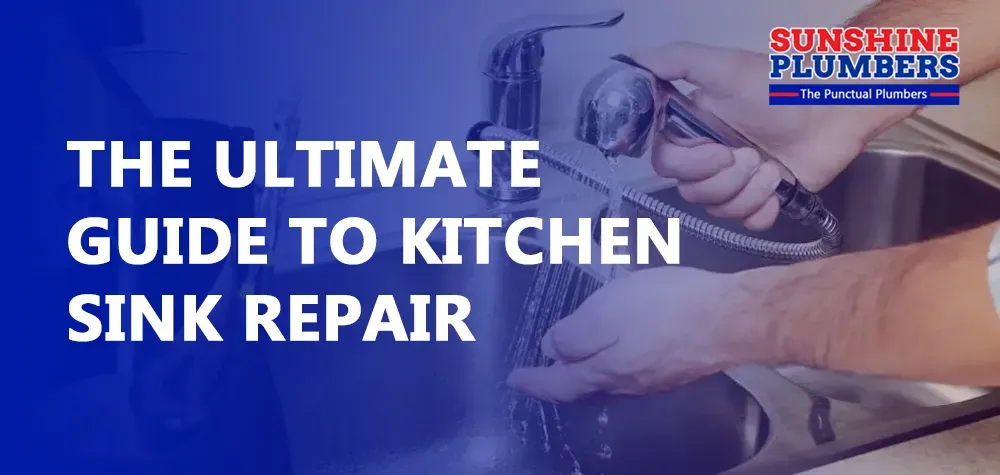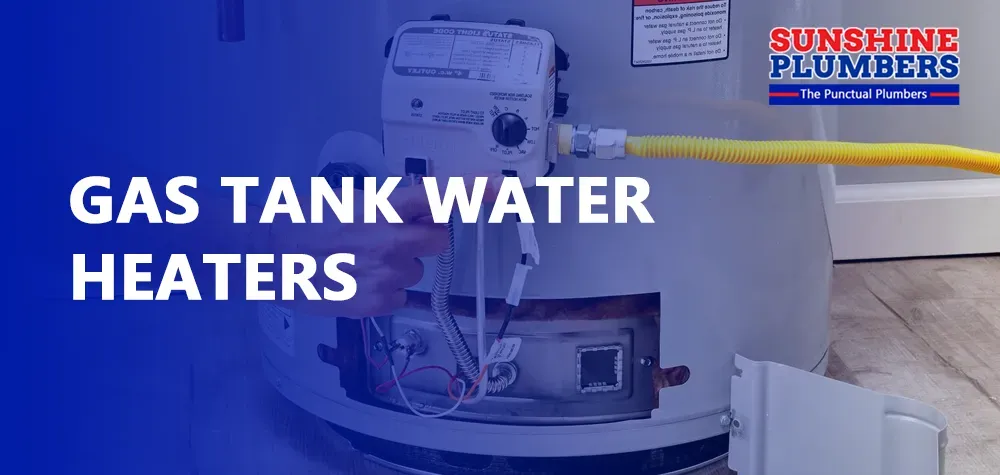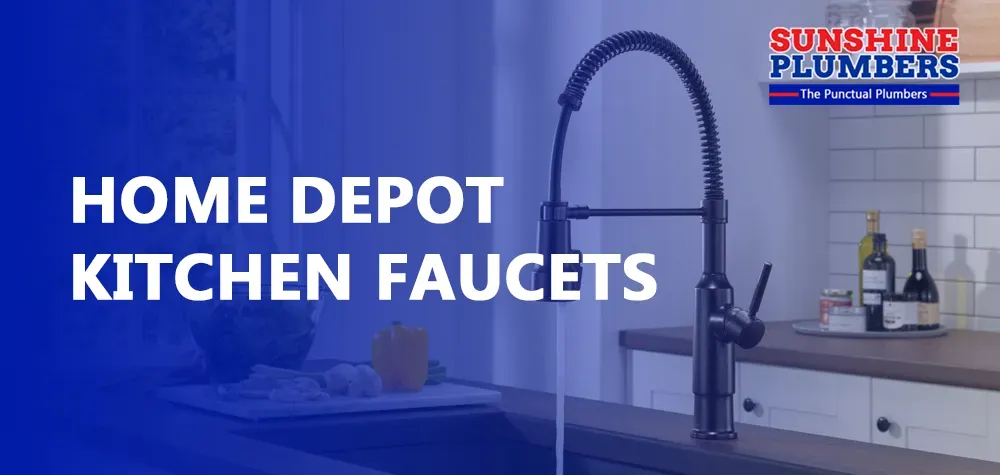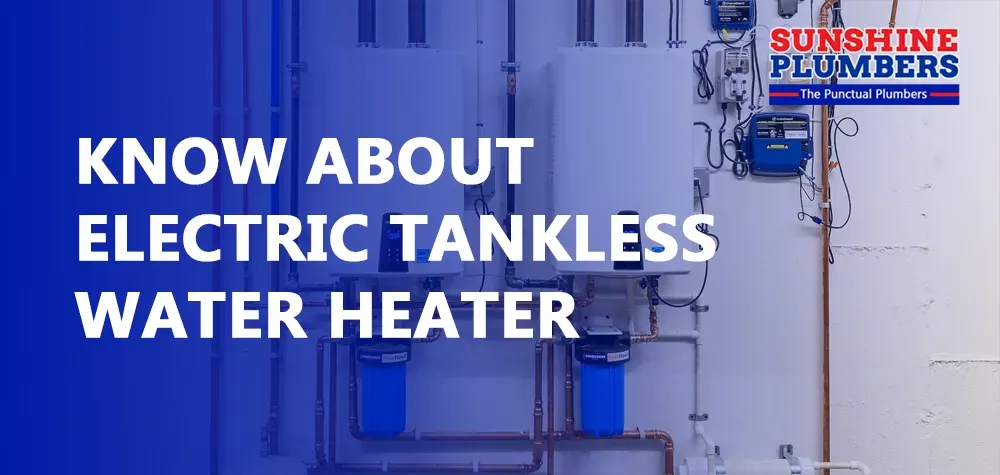All You Need to Know About Electric Tankless Water Heater
Are you considering upgrading to an electric tankless water heater? At Sunshine Plumbers, we specialize in providing expert advice and installation services for electric tankless water heaters. This comprehensive guide will cover everything you need to know about these energy-efficient systems, their benefits, installation process, and why Sunshine Plumbers is your best choice for all your water heating needs.
What is an Electric Tankless Water Heater?
An electric tankless water heater, also known as an on-demand water heater, heats water directly without the use of a storage tank. When hot water is needed, cold water travels through a pipe into the unit where it is heated by electric elements. This means you have a continuous supply of hot water, without the limitations of a traditional tanked system.
Benefits of an Electric Tankless Water Heater
- Energy Efficiency
- Electric tankless water heaters are highly efficient, as they only heat water when needed. This eliminates the standby heat loss associated with traditional tank water heaters, resulting in lower energy bills.
- Unlimited Hot Water
- With an electric tankless system, you’ll never run out of hot water. These units provide a continuous flow, making them perfect for households with high hot water demand.
- Space Saving
- Tankless water heaters are compact and can be installed in tight spaces. This frees up valuable floor space in your home.
- Longer Lifespan
- On average, electric tankless water heaters have a longer lifespan than traditional tank models. With proper maintenance, they can last up to 20 years.
- Reduced Carbon Footprint
- By using less energy, electric tankless water heaters contribute to a lower carbon footprint, making them an environmentally friendly option.
How to Choose the Right Electric Tankless Water Heater
Selecting the right electric tankless water heater for your home depends on several critical factors. Here's a detailed guide to help you make an informed decision:
Flow Rate
The flow rate of an electric tankless water heater is measured in gallons per minute (GPM) and indicates how much hot water the unit can produce at once. To determine the appropriate flow rate for your household, consider the following:
- Identify Peak Usage Points: List all the fixtures and appliances that may require hot water simultaneously. Common points include showers, faucets, dishwashers, and washing machines.
- Calculate GPM Needs: Add the flow rates of each fixture. For instance:
- Shower: 2.5 GPM
- Kitchen Faucet: 1.5 GPM
- Dishwasher: 1-2 GPM
- Washing Machine: 2-2.5 GPM If you expect to use the shower, kitchen faucet, and washing machine at the same time, your total GPM requirement would be around 6-7 GPM.
- Consider Future Needs: Account for any potential increase in hot water demand, such as home expansions or additional family members.
Power Requirements
Electric tankless water heaters require substantial power to heat water on demand. Here's how to ensure your electrical system can support the unit:
- Check Electrical Capacity: Review your home's electrical panel capacity. Most electric tankless water heaters require 120-240 volts and between 40-120 amps. This information is typically provided in the product specifications.
- Circuit Breaker and Wiring: Ensure you have the correct circuit breaker size and appropriate wiring. You may need a dedicated circuit breaker for the water heater.
- Consult an Electrician: If you're unsure about your electrical system's capacity, consult a licensed electrician. Upgrading your electrical panel may be necessary to accommodate the new unit.
Temperature Rise
The temperature rise refers to the difference between the incoming water temperature and the desired output temperature. Here’s what to consider:
- Incoming Water Temperature: Measure the temperature of the water entering your home. In colder climates, this temperature can be significantly lower, requiring the heater to work harder.
- Desired Output Temperature: Most households prefer hot water between 105°F to 120°F.
- Calculate Temperature Rise: Subtract the incoming water temperature from your desired output temperature. For example, if the incoming water is 50°F and you want it to be 120°F, the required temperature rise is 70°F.
- Match the Heater's Capabilities: Ensure the tankless water heater you choose can handle the required temperature rise at your calculated flow rate.
Brand and Model
Choosing a reputable brand and model ensures reliability, efficiency, and long-term performance. Here’s what to look for:
- Reputation and Reviews: Research brands known for their quality and reliability. At Sunshine Plumbers, we recommend top brands like Rheem, EcoSmart, and Stiebel Eltron.
- Warranty and Support: Check the warranty offered by the manufacturer. A longer warranty period often indicates confidence in the product’s durability. Additionally, consider the availability of customer support and service centers.
- Energy Efficiency: Look for models with high energy efficiency ratings. These units consume less electricity, saving you money on utility bills.
- Special Features: Consider models with features that suit your needs, such as digital temperature control, remote monitoring, and advanced safety mechanisms.
Additional Considerations
- Installation Location: Determine where you will install the unit. Electric tankless water heaters are compact and can be mounted on walls, but they need proper ventilation and access to electrical connections.
- Maintenance Requirements: Regular maintenance is crucial for the longevity of your water heater. Choose models that are easy to maintain and come with clear maintenance instructions.
- Cost: While upfront costs for electric tankless water heaters can be higher than traditional tanks, the long-term savings on energy bills can offset the initial investment. Compare prices and consider the overall value.
Installation Process for Electric Tankless Water Heaters
Installing an electric tankless water heater involves several steps:
- Site Assessment
- A professional plumber will assess the installation site to ensure it meets the unit’s requirements. This includes evaluating the electrical capacity and space availability.
- Electrical Upgrades
- If necessary, your home’s electrical system will be upgraded to support the new unit. This may involve installing a dedicated circuit breaker and wiring.
- Mounting the Unit
- The tankless water heater is mounted on the wall. This is typically done in a utility room, basement, or another convenient location.
- Plumbing Connections
- Cold and hot water lines are connected to the unit. Proper sealing and secure connections are essential to prevent leaks.
- Testing and Calibration
- Once installed, the unit is tested to ensure it operates correctly. The temperature settings are calibrated to your preference.
Why Choose Sunshine Plumbers for Your Electric Tankless Water Heater?
- Expertise and Experience
- Our team of licensed plumbers has extensive experience in installing and maintaining electric tankless water heaters. We stay updated with the latest industry standards and technologies.
- Quality Service
- At Sunshine Plumbers, we prioritize customer satisfaction. Our technicians are dedicated to providing top-notch service and ensuring your complete satisfaction.
- Comprehensive Solutions
- From helping you choose the right unit to performing the installation and maintenance, we offer comprehensive solutions tailored to your needs.
- Competitive Pricing
- We provide transparent and competitive pricing, ensuring you get the best value for your investment.
- Customer Support
- Our commitment to our customers doesn’t end with the installation. We offer ongoing support and maintenance services to keep your system running efficiently.
Maintenance Tips for Electric Tankless Water Heaters
To ensure your electric tankless water heater operates efficiently, regular maintenance is crucial:
- Descale Regularly
- Hard water can cause mineral buildup inside the unit. Descaling the system every 6-12 months helps prevent this issue.
- Clean the Inlet Filter
- Periodically clean the inlet filter to remove debris and maintain optimal water flow.
- Inspect Electrical Connections
- Check electrical connections for any signs of wear or corrosion and ensure they are secure.
- Monitor Performance
- Keep an eye on the unit’s performance. If you notice any irregularities, contact a professional plumber for an inspection.
Upgrading to an electric tankless water heater is a smart investment for energy efficiency, space-saving, and an endless supply of hot water. At Sunshine Plumbers, we are committed to providing expert installation and maintenance services to ensure your system performs optimally. If you’re looking to install an electric tankless water heater or need assistance with an existing unit, contact Sunshine Plumbers today.




